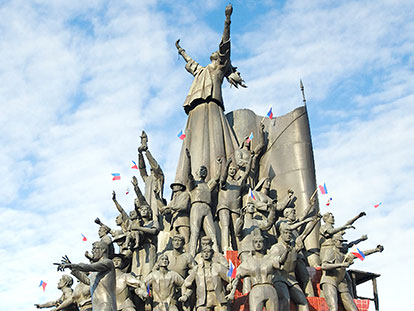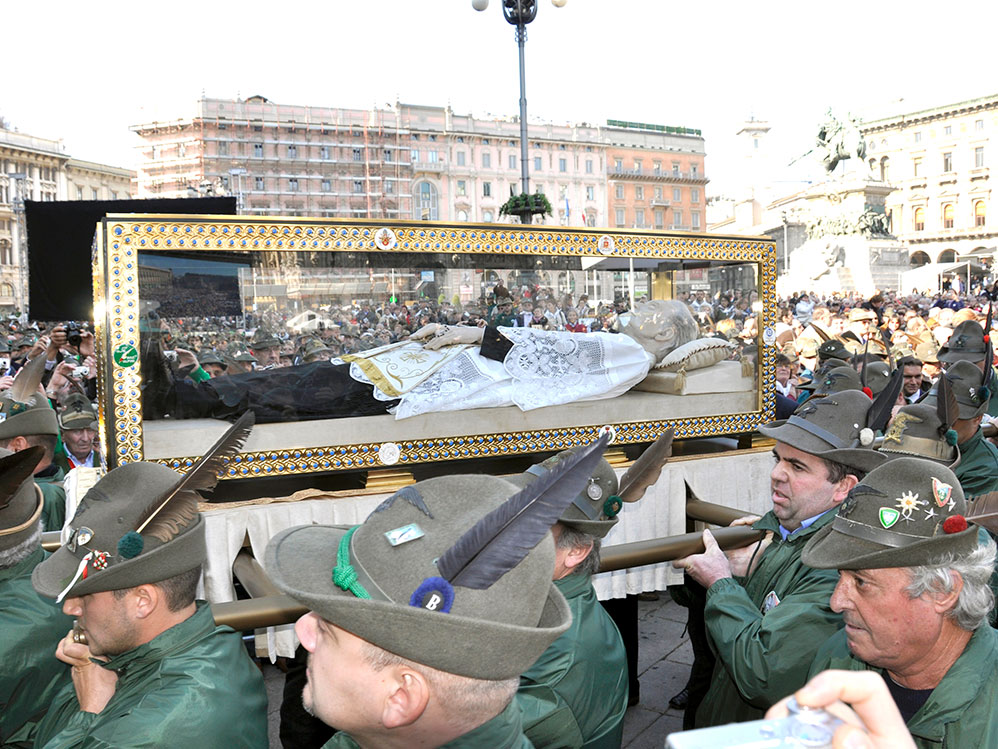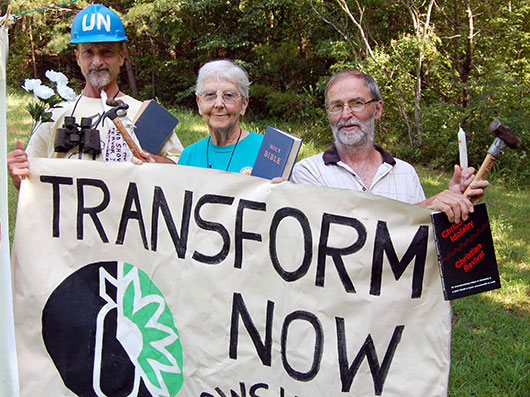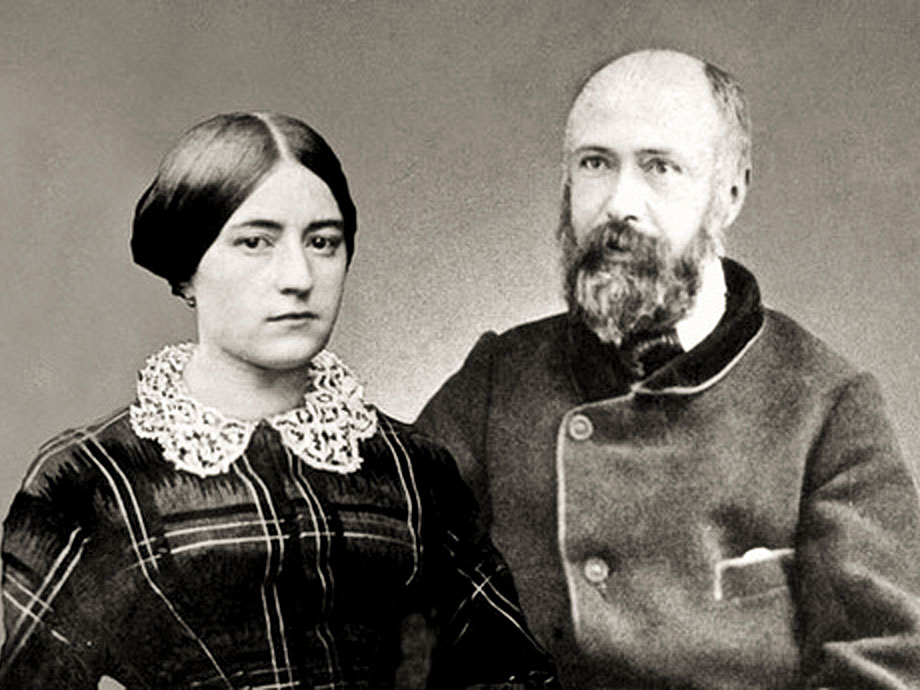At the consistory of May 15, 1879, John Henry Newman was created a cardinal of the Holy Roman Church. Leo XIII, who had recently been elected pope, personally desired to confer the dignity of cardinal on the well-known English convert whom he affectionately called “my Cardinal.” On receiving the biglietto informing him of his elevation to the cardinalate, three days before the above-mentioned consistory, Newman addressed those present at Cardinal Howard’s residence in Rome. His biglietto speech was to become famous.
On that occasion, he renewed his protest against religious liberalism. He gave a precise description of this, a description whose prophetic character is obvious in our time. “Liberalism in religion is the doctrine that there is no positive truth in religion, but that one creed is as good as another, and this is the teaching which is gaining substance and force daily. It is inconsistent with any recognition of any religion as true. It teaches that all are to be tolerated, for all are matters of opinion. Revealed religion is not a truth, but a sentiment and a taste; not an objective fact, not miraculous; and it is the right of each individual to say just what strikes his fancy. Devotion is not necessarily founded on faith. If a person puts on a new religion every morning, what is that to you? It is as impertinent to think about a man’s religion as about his sources of income or his management of his family. Religion is, in no sense, the bond of society.”
Today, we are witnesses of a mentality which sustains precisely these ideas, denounced by Newman, with very grave consequences for the cause of the Truth, for ecumenical and interreligious dialogue, for the liturgy and spirituality and for the social and cultural dimension of the faith.
Blessed Cardinal Newman can remind everyone, pastors and lay people alike, that the Truth is a very precious treasure to be accepted with faith, proclaimed with honesty and defended with force. “Commonly the Church” as Cardinal Newman ends his discourse, “has nothing more to do but to go on in her own proper duties, in confidence and peace: to stand still and see the salvation of God.”
Searching for the truth
Cardinal Newman was born in London on February 21, 1801. The eldest of six children, three boys and three girls, Newman was the son of an English banker and his wife. His boyhood was just a normal boyhood, and he loved the things of children. He loved to fly his kite, loved walking and boating, but he did not enter into contact sports like rugby and soccer. He loved music and he loved to play his violin. He had an analytic mind and he delved deeper into things than most boys of his own age did. From his grandmother, Newman gained an eager love of Scripture.
At the age of twelve, Newman showed a religiosity that seemed to be extreme. His father, in his wisdom, advised the young scholar that religiosity taken to extreme could weaken the mind. At that time, Jon Henry wrote: “God, grant me to pray earnestly against any illusion. Make me and keep me humble and teachable and cautious.” When he was 15 years old, he experienced his “first conversion,” which he himself considered one of the most significant graces of his life. It involved acute awareness of the existence and presence of God and of the invisible world.
In Apologia Pro Vita Sua, he confessed that this experience did have a great influence in his personality “isolating me from the objects which surrounded me, confirming me in my mistrust of the reality of material phenomena, and making me rest in the thought of two and two only absolute and luminous self-evident beings: myself and my Creator.”
The first half of Newman’s life is identified with Oxford, where he studied and taught, and which ever remained a kind of spiritual home. After ordination as an Anglican priest, he assumed the prestigious post of Vicar of the University Church of Saint Mary. During the 1830s, he achieved wide fame as one of the leaders of the Oxford movement, a conservative effort to restore the Church of England to holiness and Catholicity. Newman sums up the fundamental principle of the Oxford Movement in these words: “My battle was with liberalism; by liberalism I mean the anti-dogmatic principle and its development… From the age of 15, dogma has been the fundamental principle of my religion: I know no other religion; I cannot enter into the idea of any other sort of religion; religion, as a mere sentiment, is to me a dream and a mockery. As well can there be filial love without the fact of a father, as devotion without the fact of a Supreme Being.”
Newman realized that the polemic against religious liberalism needed the foundation of a sound doctrine. He was convinced that he had found the basis for it in the writings of the Fathers of the Church whom he admired as the true heralds and doctors of the Christian faith. In 1843, with immense labor, he composed the Essay on the Development of Christian Doctrine, possibly his most original work as a theologian. He came to believe that the development of doctrine in the Roman Church was not a distortion of the faith but an unfolding of its potentialities in response to new questions. Thus convinced that the Roman Catholic Church was faithful to its primitive origins, he accepted the inevitable conclusion that he should become a Catholic.
Rome sweet home
One of the things that had tormented Newman was that he did not see enough holiness in the Roman Catholic Church of that time. But this impression was somehow changed by an Italian Passionist priest, Fr. Dominic Barberi. Unknown to Newman at the time, Fr. Barberi was going around poorly dressed, preaching and frequently having things thrown at him. Newman later wrote of him: “His very look had about him something holy. When his form came within sight, I was moved to the depths in the strangest way. The joy and affability of his manner in the midst of all his sanctity were themselves like a holy sermon. No wonder that I became his convert and his penitent.”
Fr. Dominic’s vivid description of the scene of Newman’s conversion is beautiful. He writes: “October 5, 1845 was a rainy day. I came out of the rain and took up my position by the fire to dry myself. The door opened and what a spectacle it was for me to see, at my feet, John Henry Newman begging me to hear his confession and admit him into the bosom of the Catholic Church. And there besides the fire, he began his general confession with extraordinary humility and devotion.”
Newman was allowed to pursue ordination as a Catholic priest. To this end, he was sent for a term of studies in Rome. There, meekly, he sat on a bench with people much younger than himself, undergoing the rigors of the scholastic method. He did not find it congenial. Later, he would write A Grammar of Assent, arguing against the idea that the Christian faith can be proved through logic.
With his ordination in 1847, Newman became a priest of the Oratory of St. Philip Neri. Returning to England, he established an Oratory in working-class Birmingham. Newman was first of all the superior and principal organizer of a busy community of priests, with rapidly growing parishes for which churches and schools had to be provided. Moreover, Newman gave himself to writing. The success of his book, Apologia pro Vita Sua, gave Newman new life. In his sixty-fourth year, we find Newman renewed. The making of the Apologia was a real feat of writing and endurance. He completed 562 pages in ten weeks, planning and revising several times.
Newman worked daily from dawn to dusk; at times, for sixteen hours, and even twenty-two hours a day. To complete the picture of Newman’s laborious life, we need to remember his immense correspondence. He was swamped by letters of people anxious to be in touch with him. All these letters Newman carefully answered and, through these letters, many became interested in and eventually converted to the Catholic Church.
There was an underlying feeling among some that Newman was not really a loyal Catholic. In 1859, his article “On Consulting the Laity in Matter of Faith” was reported to Rome, casting a shadow over his name that would endure for decades. Yet, in 1867, Pope Pius IX sent him a personal assurance that he had no doubt about his orthodoxy. Two years later, he even invited him to be one of the theologians at the First Vatican Council. Then, in 1879, Leo XIII made him a cardinal.
Like a true genius, Newman, in himself, joined the opposites: he was a realist and a mystic, an intellectual and a very affectionate person. Especially dear to Newman was the mystery of the Incarnation: at Christmas, he knelt in deep recollection before the crib. Newman was a true servant of Mary. He loved the rosary: he believed that this prayer turned the creed into a prayer. Newman had a great love for the saints, especially St. Philip Neri.
From shadows to the light
In modern times, no simple priest, without duties in the Roman Curia, had been raised to the Sacred College of Cardinals. Newman’s elevation was hailed by the English nation and by Catholics everywhere with great enthusiasm. It broke down the wall of partition between Rome and England. It was for him like a point of arrival. By that time, he had revised all his writings and had a feeling of completion. Now his hand would serve him no more, but his mind kept its clearness always. In The Dream of Gerontius (1865), his poetic masterpiece, he anticipated his dying hours and looked forward to his final pilgrimage, “alone with the Alone.” Death came with little suffering, on August 11, 1890. His funeral was a great public event. He lies in the same grave with Ambrose St. John, his great friend, whom he called his “life under God for thirty-two years.”
His motto as cardinal, taken from St. Francis de Sales, was “Heart speaks to heart.” It reveals the secret of his eloquence, unaffected, graceful, tender, and penetrating. On his epitaph we read: “From shadows and symbols to the truth.” John Henry Newman continues in his writings the Catholic tradition of the Fathers of the Church: steadfast in loyalty to the Truth, while discerning with a prophet’s vision the task of the future. Conscience to him was the inward revelation of God; Catholicism the outward and objective term of reference. This twofold force he opposed to the agnostic, the rationalist, the unbeliever.
In his own time, Newman was recognized for his critical role in the reestablishment of Catholicism in England. Today, he is remembered as one who struggled to keep the mind of the Church open to what was good and valuable in the modern world. His understanding of the historicity of doctrine, his defense of the laity, his non-scholastic approach to theology, his spirit of tolerance, his belief in the separation of church and state, his appreciation for the spiritual integrity of intellectual life, and his celebration of the rights of conscience: all these values are consonant with our modern Catholic sensitivity. They were not so in the nineteenth century.
In 2001, a Boston man turned to the late Cardinal John Henry Newman to help him overcome a crippling spinal condition. Deacon Jack Sullivan, whose miraculous recovery led to Newman’s beatification, will be present and read the gospel at the mass on the very day of the beatification, in Birmingham, on September 19. Except for the martyrs, Newman will be the first English saint to be canonized since well before the Reformation.
When asked whether interest in Newman would increase following his beatification, the Archbishop of Westminster, Vincent Nichols, replied: “Cardinal Newman is a very particular character in a very particular time of English history and English life. When he died, there was huge and popular support and devotion. It is said that more than 20,000 people lined the streets. I do believe that in the next 15 to 20 years, given the fact of his beatification and an awareness in our society that self-sufficiency is not enough, there will be growing interest in him as a man who lived a very holy life.”











